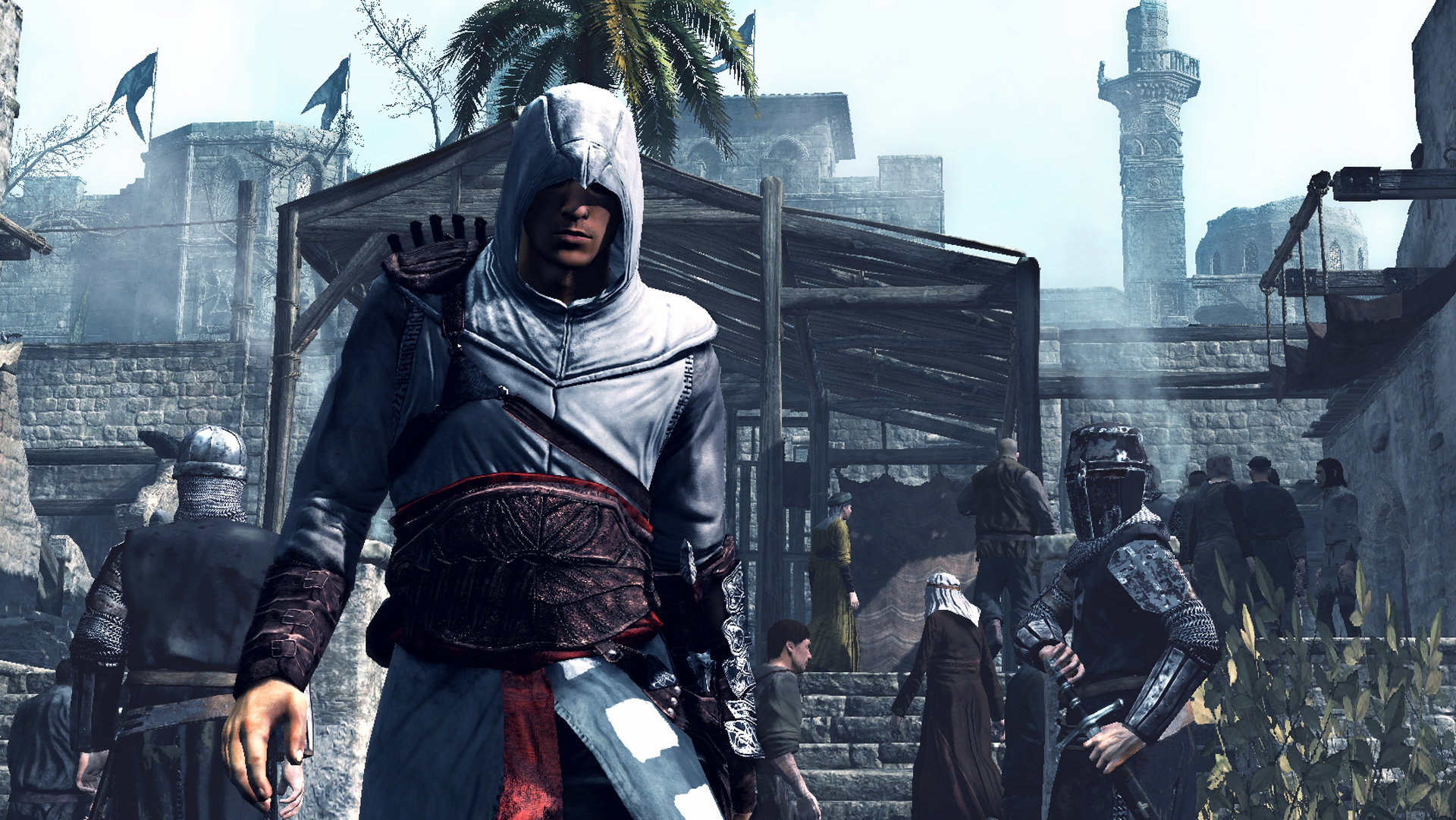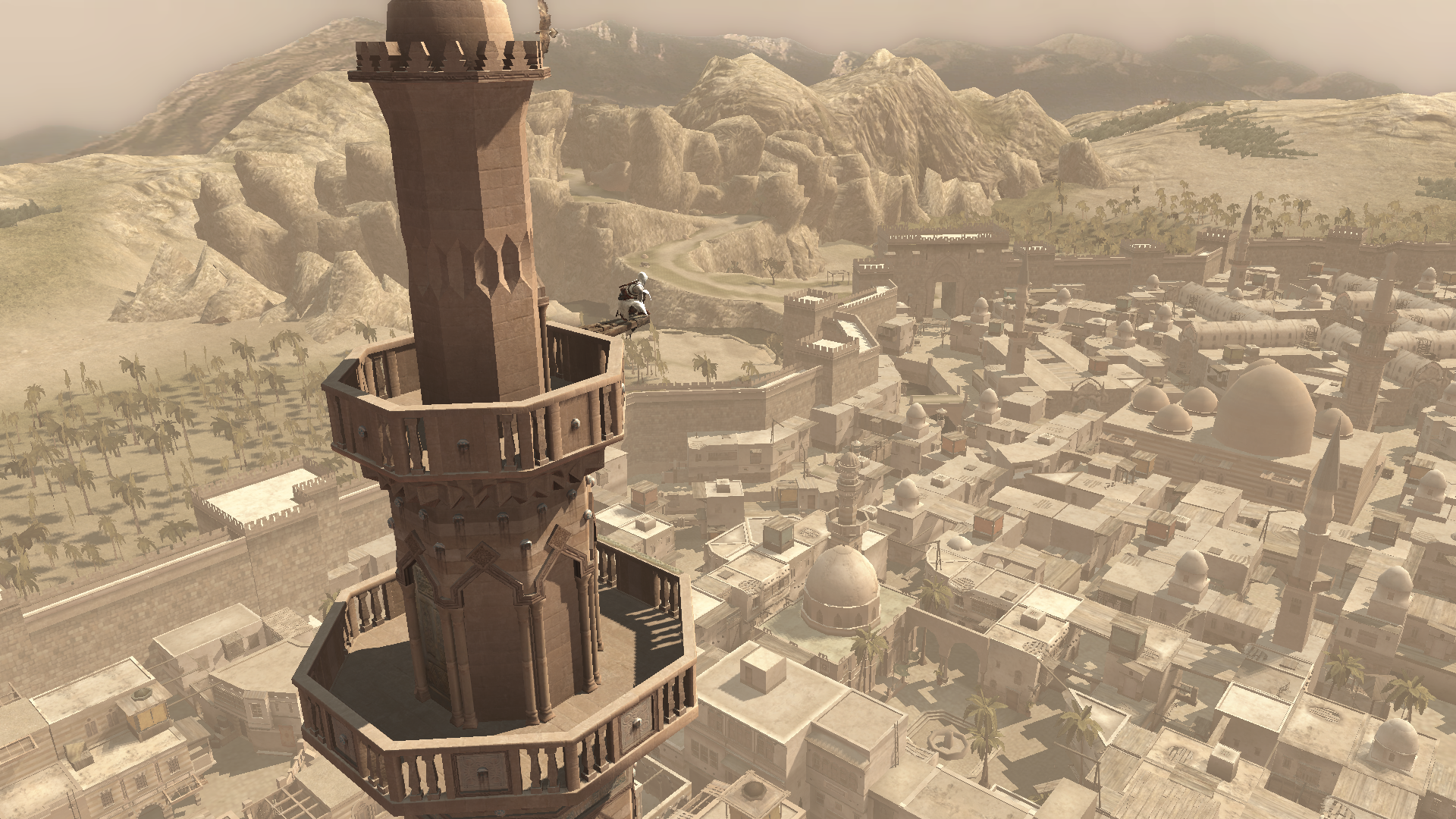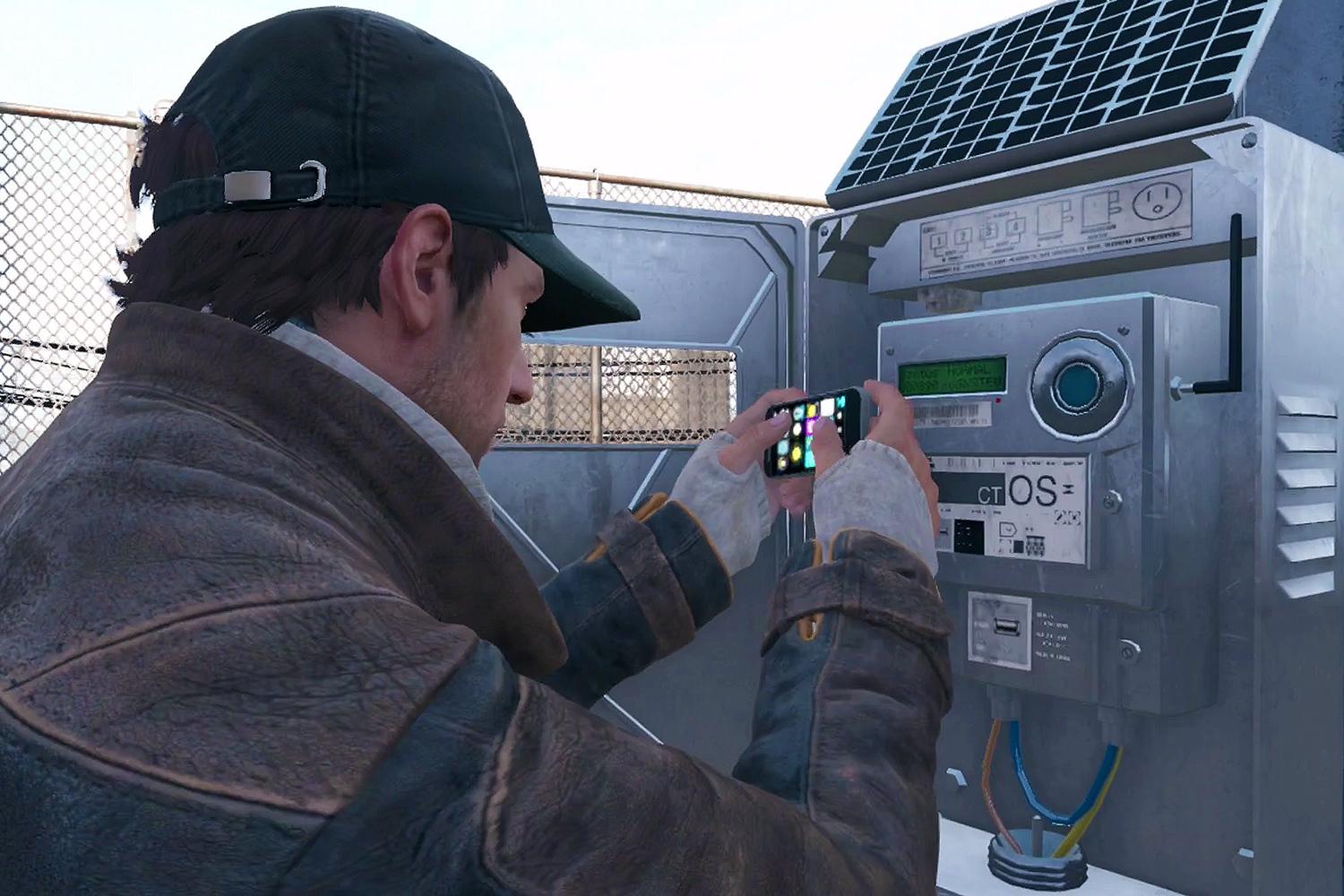How collectibles, stealth and climbing came to define the Ubisoft open world game
Towers! Minimap icons! Unnecessary stealth! Has every Ubisoft open world become the same game?

Once upon a time, Ubisoft's library was simple: it made platformers starring terrifying mascots with no limbs, and roughly 17,000 Tom Clancy tie-ins. But over the last decade, Ubi has muscled in on the genre that GTA made famous, building huge worlds spanning radically different time periods. Regardless of whether you’re controlling a historical hitman or a coma-bound cop, though, Ubisoft’s sandboxes love to borrow mechanics from other Ubi games.
Join us as we look back at the history of the Ubisoft's open world games, to see just how these sprawling sandboxes have evolved (and grown more and more alike).
A stealthy start
Ubisoft first began to dabble in the sandbox space with 2007’s Assassin’s Creed. Skip back a decade, and you’d never guess the seismic scope the franchise would reach. Before the 2D spin-offs, books, and shitty Michael Fassbender films could wear us all down, there was just this ambitious (more than a bit broken) sandbox that spawned many of the features open world games still cling to in 2017.
Chances are you don’t remember much about the original Assassin’s Creed. You probably recall moping around ancient Jerusalem stabbing folk as a dude in a hoodie. Perhaps you have a dim recollection of eavesdropping on NPCs chatting away on benches. Maybe you even remember that early kickass trailer with the horribly catchy Unkle song.
Far Cry 3’s antenna towers undoubtedly cast the longest shadow on almost every Ubi open world that followed, but that's not where they started.
The one thing you’ll definitely recall is Ubisoft’s obsession with making players scale super lofty buildings. That all started in Altaïr’s adventure. To fully scope out all of the Holy Land’s side activities, you had to climb the tops of the tallest structures across Jerusalem, Acre, and Damascus. Doing so gives you a very literal eagle’s eye view of the sprawling mass of humanity hundreds of feet below; a bird of prey swooping around the building when you reach its summit.
These vertigo-bating landmarks birthed Ubi’s most infamous open world feature: gradually filling up a map with mission markers.






Crossover feature: Climbing towers
Assassin’s Creed may have introduced us to the idea of big-ass buildings that revealed points of interest when climbed, but it was 2012’s Far Cry 3 that really cemented the feature. Jason Brody’s leopard-punching, pirate-blasting, tattoo-inking tropical holiday had the sort of wide reaching influence on the open world genre its two predecessors could only have sweaty night terrors about… mainly because its predecessor literally gave you malaria.
Keep up to date with the most important stories and the best deals, as picked by the PC Gamer team.
Surprisingly, Far Cry 2’s obsession with making you stuff pills down your throat to keep mosquito-borne diseases away never caught on—nor did its love of jamming weapons. Far Cry 3 ditched the annoying obstructions in favour of features that kept you itching to explore.
Far Cry 3’s antenna towers undoubtedly cast the longest shadow on almost every Ubi open world that followed. Scaling these rickety structures—which often feel like they’re being kept up by little more than prayers and a few loose screws—helps Brody fill his map up with all manner of side distractions. Haphazardly jumping, swinging and climbing your way between the crooked layers of the towers in Far Cry 3 isn’t just a hoot in and of itself, it also makes tracking the series of wildlife hunts, enemy encampments, treasure chests and races spread throughout the densely packed archipelago a lot easier.

Crossover feature: Animals
Also, animals. An ark's worth of animals. Brief hunting escapades may have popped up a few months prior in Assassin’s Creed 3, but it was Far Cry 3 that really took the pelt-collecting ball and ran with it. Forget quietly ruminating on the unspoken majesty of the animal kingdom: Ubi’s critter-obsessed shooters just want to make you shoot endangered species in their furry faces.
Not that the trend Far Cry 3 kicked off (which seemed heavily inspired by Rockstar’s Red Dead Redemption) entirely revolves around needless slaughter. Hunting down and skinning animals allows Brody to use pelts to craft ever larger ammo bags and other weapon-focused accessories.
The creature carnage in Far Cry 4 takes things even further, with attacks coming from land, sea and air—lord are that game’s ultra aggressive eagles ever jerks. The Himalayan sandbox would also introduce rideable beasts in the form of rampaging elephants, which the prehistoric follow-up would go nuts with.

Last year’s Far Cry Primal makes the toothy, tusked inhabitants of its ancient world the stars of the show. Far Cry 3 may have let you punch sharks, but next to Primal’s wild encounters, that's positively tame. When you can train sabertooth tigers, command jaguars to stealth kill fellow cavemen, and use an owl as a sort of feathered, Mesolithic drone to tag enemies—a feature both Watch Dogs 2 and Ghost Recon: Wildlands would quickly reskin—bopping Jaws’ cousin on the nose ain’t no thang.
Ubisoft has since pushed more animals into Assassin's Creed: Origins. Even Watch Dogs 2 depicts San Francisco's Pier 39 with a rookery of slovenly seals leisurely sunning themselves on gangplanks.








Crossover features: Sneaking, tagging, and stealth takedowns
Stealth has also played a large role in many of Ubi’s open world games, regardless of the setting, era or enemy type. It started with players blending into crowds with the ‘social stealth’ gameplay of the original Assassin’s Creed. It was an innovative feature for its time—after all, most stealth games up to that point forced their characters to either hide in the shadows or a cardboard box.
Sneaking mechanics were quickly shoved into most of its games following Assassin’s Creed's success. Who cares if these stalking scenarios were often absurd: they make for easy mission design, dammit!
Over the years Ubisoft has proven there’s no open world setting it can’t crowbar a stealth section into.
Diving underwater, then pulling pirates into the drink as you clear out enemy strongholds in Far Cry 3. Slipping between cover to slap a chokehold on Watch Dogs’ various shortsighted guards. Poking Edward Kenway’s head out of Assassin’s Creed 4’s suspiciously plentiful patches of long grass. Using a tiny, extra voyeuristic RC car to infiltrate the offices of a tech startup in Watch Dogs 2, then zapping any security personnel that get too curious. Solid Snake and Sam Fisher have a lot to answer for.
Whether you’re whacking religious zealots in the time of the Crusades or putting San Francisco office workers to sleep with a taser gun, over the years Ubisoft has proven there’s no open world setting it can’t crowbar a stealth section into.
Tagging enemies is another prominent feature most Ubi games have turned to over the last few years. This actually predates Ubisoft's open worlds, in games like Ghost Recon Advanced Warfighter and Rainbow Six: Vegas, but it's since become a vital part of their sandboxes as well.
Placing markers down to keep track of your foes’ positions popped up in Far Cry 3, with Brody’s super useful set of pirate-tagging binoculars. Assassin’s Creed, Watch Dogs, and Ghost Recon have all subsequently borrowed this eagle-eyed feature, while even the likes of Metal Gear Solid V have benefited hugely from Jason’s peeping Tom bouts of recon making tagging an open world staple.
Oh, and almost every one of those games lets you perform stealth takedowns, too. Because of course any self respecting hipster hacker/out of his depth fratboy/neanderthal can neutralise foes with the quiet, deadly efficiency of a Navy SEAL team.

Crossover feature: The Ubisoft collectible
This is the big one. More than any of the above crossover features, one recurring element has helped prop up Ubi’s increasingly sophisticated sandboxes this past decade: collectibles. ALL the collectibles.
Eagle feathers in Assassin’s Creed; lost letters and spirit totems in Far Cry; Watch Dogs’ key data caches; Kingslayer files in Ghost Recon: Wildlands; even crystalline shards in the otherwise wonderfully nonconformist Grow Home, and its sequel Grow Up. Grand Theft Auto 3 may have introduced the world to sandbox collectibles with its fiendishly placed hidden packages, but we doubt Rockstar envisioned game worlds rammed full of bird feathers, PC files and statue heads.
Hell, Ubisoft has even managed to cram several garages full of collectibles into its vehicled-based sandboxes. 2011’s brilliantly offbeat Driver San Francisco has 130 movie tokens to hoover up as you bomb around the Golden City while you mind-jack cars in gaming’s most exciting coma. The Crew wouldn’t miss this OCD party for the world, either. The flawed 2014 racer scatters 20 Wreck Parts in each of the five sections that make up its vast North American sandbox of endless highways.

It’s almost as if Ubisoft doesn’t trust you enough to leave you to your own devices for five minutes. A good thing, too. Why take your time admiring the painstakingly recreated canal networks of Renaissance era Venice in Assassin’s Creed 2, when your inner completionist could be making Ezio ruin his shins by scampering up rooftops for mangy bird feathers?
There’s no question Ubisoft’s open worlds have evolved drastically over the last ten years. Place the original Assassin’s Creed next to the upcoming Beyond Good & Evil 2 (Michel Ancel’s long awaited sequel lets you explore entire galaxies), and you may as well be comparing a kid’s crayon scribbles to the ceiling of the Sistine Chapel. Still, there’s no question Ubi’s plethora of internal studios love to crib concepts from each other’s games.
So whether its a slightly out of place stealth mission, wads of XP to splurge on increasingly convoluted skill trees, or vaulting up towers to open up that fog covered map, you should probably expect Ubisoft open worlds to continue to share crossover features as they continue to evolve. Darwin would be delighted. Probably.

